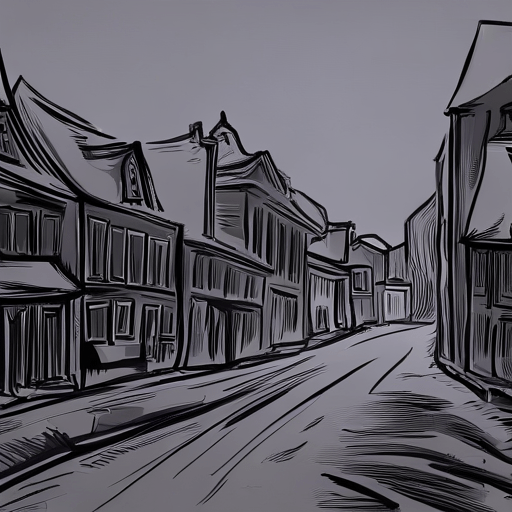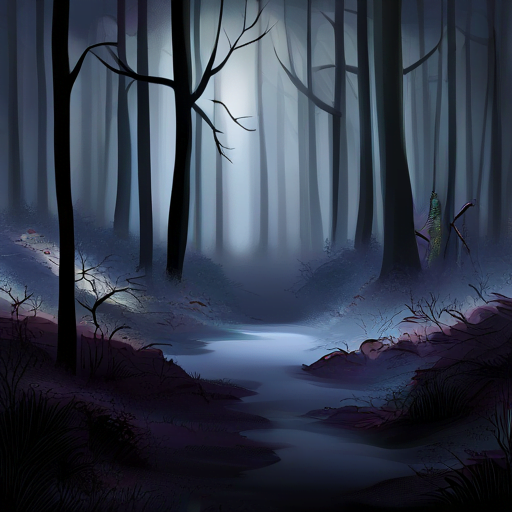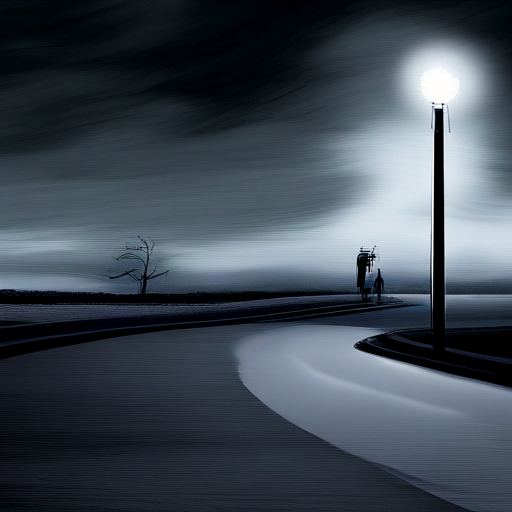Are you someone who loves to read books and get lost in the world of literature? Have you ever wondered what makes certain books feel happy, sad, or eerie? Well, you’re in luck because today we’re going to talk about mood in literature and how to identify it.
Mood refers to the atmosphere or emotional feeling that a reader experiences while reading a literary work. It is not the same as tone, which refers to the author’s attitude towards the subject matter.
Mood, on the other hand, is created by various elements such as setting, imagery, and language. In this article, we’ll take a closer look at what contributes to mood in literature and explore some literary devices and techniques that authors use to create it.
By the end of this article, you’ll be able to identify the mood of a literary work and understand how it affects your reading experience.
Table of Contents
Understanding the Concept of Mood in Literature

You’ll feel like you’re being transported to the pages of a book, as you learn just how the atmosphere and emotions in a story are brought to life through the art of writing.
Mood in literature refers to the overall feeling or atmosphere that a piece of writing creates for the reader. It’s the combination of different elements, such as the setting, tone, and language, that evoke a certain emotion or response in the reader.
Identifying the mood in literature can enhance your reading experience and help you understand the author’s intention and message. Whether it’s a dark and eerie mood that sends shivers down your spine or a light and cheerful mood that brightens your day, the mood in literature is a powerful tool that writers use to engage and captivate their audience.
Elements that Contribute to Mood

When you want to understand the elements that contribute to the mood in literature, you must consider the setting, tone, imagery, and symbols.
The setting refers to the physical and emotional environment in which the story takes place, while the tone conveys the author’s attitude towards the subject matter.
Imagery, on the other hand, involves the use of sensory details to paint a vivid picture in the reader’s mind, while symbols represent abstract ideas or concepts within the text.
Setting
As you delve into the setting of a piece of writing, you’ll find that the atmosphere and environment can greatly impact the emotional tone of the story.
The setting includes not only the physical location, but also the time period, weather, and other environmental factors.
For example, a story set in a dark, abandoned house on a stormy night will create a sense of fear and foreboding.
On the other hand, a story set in a sunny park on a beautiful day will evoke feelings of happiness and contentment.
Paying attention to the setting can help you better understand the mood of the story and how the author is trying to make you feel.
Tone
The tone of a piece of writing can greatly impact the emotional response of the reader, and it’s important to pay attention to how the author is trying to make you feel. The tone is the author’s attitude towards the subject matter, and it can be conveyed through the language used, the choice of words, and the overall style of writing.
A piece of literature can have a variety of tones, such as humorous, serious, sarcastic, or even melancholic. It’s crucial to identify the tone because it can change the reader’s interpretation of the text.
For instance, if the author uses a sarcastic tone, the reader might not take the text seriously, but if the author uses a serious tone, the reader might feel more compelled to pay attention to the content. Therefore, understanding the tone is an essential aspect of analyzing a piece of literature.
Imagery
Imagery in writing allows you to vividly experience the scene being described, painting a picture in your mind with the author’s words. It involves the use of descriptive language and sensory details to create a mental image for the reader.
For example, if the author describes a character walking through a forest, they may use words like ‘crunching leaves’ or ‘rustling branches’ to create the sound of footsteps and movement. They may also describe the smell of pine trees or the feel of a cool breeze on the character’s skin.
Imagery helps to engage the reader’s senses and bring the story to life, making it a powerful tool in creating mood in literature.
Symbols
Symbols add depth and meaning to a story, allowing you to uncover hidden messages through the use of objects or actions that represent something else. For example, a dove can symbolize peace and innocence, while a snake can represent evil or danger.
The use of symbols can also create a sense of universality in literature, as certain symbols are recognized across cultures and time periods. Paying attention to symbols can help you better understand the themes and motifs in a story, and allow you to make connections between different elements of the text.
So, keep an eye out for those seemingly insignificant objects or actions that may hold a deeper meaning in the story you’re reading.
Literary Devices and Techniques that Create Mood

You’ll feel a sense of immersion when reading literature that uses literary devices and techniques to create a specific atmosphere.
These include imagery, symbolism, foreshadowing, and tone. By using vivid descriptions and figurative language, authors can transport you to the setting of the story and make you feel as though you’re experiencing the same emotions as the characters.
Symbolism can also be used to create an underlying meaning and mood throughout the story. Foreshadowing can hint at future events and create a sense of tension or anticipation.
Finally, tone sets the overall mood of the story, whether it’s dark and brooding or light and whimsical. Combined, these literary techniques can create a powerful mood that can stay with you long after you finish reading the story.
Tips for Identifying Mood in Literature

When trying to identify the mood in literature, pay attention to the descriptive language used by the author. This includes the use of specific words and imagery that can evoke different emotions.
Consider the author’s purpose in writing the piece and how that may affect the mood. Additionally, analyze the emotions of the characters and look for patterns and repeated motifs throughout the story.
By following these tips, you can gain a deeper understanding of the mood and how it contributes to the overall message of the piece.
Pay Attention to Descriptive Language
As you read, keep an ear out for the words that paint a picture and bring the setting to life, for it’s often through descriptive language that the author conveys the tone and atmosphere of the story.
The use of sensory details like sight, sound, smell, taste, and touch can help you identify the mood of a piece of literature. For example, if the author describes a dark and gloomy forest with howling winds and rustling leaves, it may evoke a feeling of fear or anxiety.
On the other hand, if the author describes a warm and sunny beach with the sound of waves crashing and the scent of saltwater in the air, it may evoke a feeling of relaxation or happiness.
So pay attention to the descriptive language used by the author. It can reveal a lot about the mood of the story.
Consider the Author’s Purpose
Now that you’ve learned the importance of paying attention to descriptive language when identifying the mood in literature, it’s time to consider the author’s purpose.
The mood of a piece of literature is not just a random feeling, but rather, it is a deliberate and intentional creation by the author to convey a certain message.
It’s important to consider why the author chose to create a certain mood and what they’re trying to communicate to their audience. By understanding the author’s purpose, you can identify the mood more accurately and gain a deeper understanding of the literary work.
So, the next time you’re analyzing a piece of literature, take a moment to consider the author’s purpose and how it relates to the mood of the piece.
Analyze the Characters’ Emotions
You’ll gain a deeper understanding of the author’s message by analyzing the emotions of the characters in the literary work.
Characters’ emotions are often a key component in creating the mood of a piece of literature. By paying attention to the characters’ emotions, you can identify the mood the author is trying to convey.
For example, if the characters are feeling anxious and scared, the mood of the story may be tense and suspenseful. On the other hand, if the characters are feeling joyful and content, the mood may be lighthearted and cheerful.
Analyzing the characters’ emotions can also help you understand the author’s purpose in creating the work. By understanding the emotions the characters experience, you can gain insight into the themes and ideas the author is exploring.
So, take the time to analyze the emotions of the characters in the literature you read, and you’ll be able to gain a deeper understanding of the author’s message.
Look for Patterns and Repeated Motifs
You can really start to feel the author’s message sink in when you notice the recurring patterns and motifs woven throughout the story. These patterns and motifs can be anything from certain words or phrases that are repeated throughout the book, to symbols or objects that are consistently referenced.
By paying attention to these details, you can gain a deeper understanding of the mood and tone of the story. For example, if a certain character is always described as being surrounded by darkness or shadows, this may indicate a sense of foreboding or danger. On the other hand, if a character is frequently associated with light or sunshine, this may suggest a more positive or hopeful mood.
So, keep an eye out for these patterns and motifs as you read, and you’ll be able to better identify the mood and message of the story.
Examples of Mood in Literature

You’re going to love exploring the different examples of mood in literature!
From classic novels like Wuthering Heights to contemporary works like The Fault in Our Stars, you’ll be able to identify the mood that the authors were trying to convey.
You’ll also get to analyze how mood is established in poems, short stories, and film adaptations, as well as how soundtracks can enhance the overall mood of a piece of literature.
Classic Literature
As you dive into the world of classic literature, you’ll find yourself transported to a time and place where language is art and emotions are palpable.
Classic literature is known for its ability to evoke powerful moods and emotions in readers. For example, you may feel a sense of foreboding while reading Edgar Allan Poe’s ‘The Raven,’ or a deep sense of longing and nostalgia while reading F. Scott Fitzgerald’s ‘The Great Gatsby.’
The language used in classic literature can transport you to another time and place, and the mood it creates can stay with you long after you’ve finished reading.
Whether you’re reading a tragedy or a love story, the mood in classic literature is a key component in creating a memorable and impactful reading experience.
Contemporary Literature
If you’re a fan of modern storytelling that captures the complexities of human experience, then contemporary literature is the perfect genre for you.
Contemporary literature refers to works that have been written in the recent past, usually within the last few decades. These works explore a wide range of themes and ideas, from love and loss to identity and belonging. They often tackle difficult and challenging topics, such as mental illness, political turmoil, and social injustice.
One of the defining features of contemporary literature is its ability to reflect the current state of society, making it a powerful vehicle for social commentary and critique.
Whether you’re looking for a thought-provoking read or simply want to be entertained, contemporary literature is sure to deliver.
Poems and Short Stories
Take a moment to immerse yourself in the vivid imagery and emotional depth of the poems and short stories in this section, allowing yourself to be transported to different worlds and perspectives.
As you read, pay attention to the mood of each piece. Is it somber and melancholy or joyful and uplifting? Do the words and descriptions evoke a sense of fear, longing, or hope?
Often, the mood of a poem or short story can be conveyed through the tone of the author’s voice, the setting, and the characters’ emotions. By identifying the mood, you can gain a deeper understanding of the author’s message and connect more deeply with the story or poem.
So, take your time, read slowly, and let the mood wash over you as you explore these captivating pieces of literature.
Film Adaptations and Soundtracks
Now that you’ve learned about how mood is conveyed in poems and short stories, let’s talk about how it’s portrayed in film adaptations and soundtracks.
When watching a movie, the soundtrack can heavily influence the mood of a scene. The type of music and the tempo can evoke emotions such as suspense, romance, or sadness. For example, in a horror movie, the use of eerie music can intensify the feeling of fear.
In addition, the visual elements of a movie, such as lighting and camera angles, can also contribute to the overall mood. A dark and shadowy setting can create a sense of mystery or danger.
By paying attention to these elements, you can identify the mood being set in a film adaptation.
Frequently Asked Questions
How does the author’s personal mood affect the mood of the literature they write?
When you read a piece of literature, you may notice a certain mood that permeates the writing. This mood can be described as the emotional atmosphere created by the author’s words.
However, have you ever considered how the author’s personal mood affects the mood of their writing? It’s important to remember that authors are human, and their emotions can seep into their work.
For example, if an author is feeling melancholy, their writing may have a somber tone. On the other hand, if an author is feeling joyful, their writing may have a more lighthearted tone.
Understanding how an author’s personal mood can impact the mood of their writing can provide insight into the emotional depth of a piece of literature.
Can mood in literature be interpreted differently by different readers?
When it comes to mood in literature, every reader has a unique perspective. This means that the same story can evoke different emotions and reactions depending on who’s reading it.
Interpretation is key when it comes to understanding the mood of a piece of literature. For example, one reader might view a story as melancholic and somber, while another might interpret it as hopeful and uplifting.
The mood of a story can be influenced by many factors, including the author’s personal experiences, the setting, the characters, and the plot. Ultimately, the mood of a story is subjective and can be open to interpretation.
How does the setting of a story contribute to the mood?
When you read a story, the setting can have a huge impact on the mood it creates. The environment, time period, and location all contribute to the overall feeling of the narrative.
For example, a spooky old mansion on a dark and stormy night can create a sense of foreboding and fear, while a sunny beach on a summer day can evoke feelings of happiness and relaxation. The setting can also affect the tone of the story, influencing the character’s actions, and shaping the plot.
So, pay attention to the setting as you read, and see how it contributes to the mood of the story.
Are there any specific moods that are more commonly found in certain genres of literature?
When it comes to different genres of literature, there are definitely certain moods that tend to be more prevalent.
For example, horror and suspense novels often aim to create a feeling of fear or unease within the reader, while romance novels often focus on creating a sense of warmth, joy, and connection.
On the other hand, comedy novels prioritize creating a lighthearted and humorous mood, and tragedy novels often aim to create a sense of despair and sorrow.
By understanding the common moods associated with different genres, you can better anticipate the emotional experience you’re likely to have when reading a particular book.
Is it possible for a piece of literature to have multiple moods simultaneously?
Yes, it’s definitely possible for a piece of literature to have multiple moods simultaneously.
In fact, many great works of literature are known for their ability to evoke a range of emotions in the reader. For example, a novel might be both suspenseful and romantic, or it might be both tragic and humorous.
The key to identifying multiple moods in a piece of literature is to pay attention to the various emotions that the author is trying to convey. Look for clues in the language, tone, and imagery, and try to identify the different emotions that are being evoked.
By doing so, you can gain a deeper understanding of the work and appreciate its complexity and richness.
Conclusion
Now that you know what mood in literature is and how to identify it, you can use this knowledge to deepen your understanding and appreciation of any piece of literature you encounter.
Remember, the mood of a story can greatly affect the reader’s experience, creating emotional connections and leaving lasting impressions.
By paying attention to the elements that contribute to the mood, such as setting, tone, and symbolism, as well as the literary devices and techniques used, you’ll be able to more accurately identify and interpret the mood of any text.
So next time you’re reading a novel or poem, take a moment to consider the mood it creates and how it enhances the overall reading experience.
